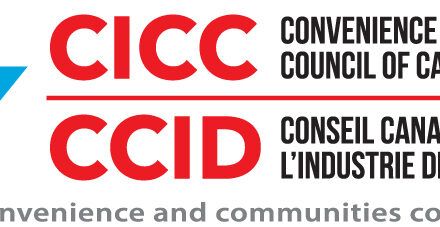
Trends Within North American Underground Tank Market

By Ann K. Ryan
In the last 40 years, the market share of fiberglass underground storage tanks (USTs) has increased from less than 10 per cent to approximately 75 per cent or more of new tanks installed.
Today, 29 out of the 30 largest fuel marketers in the U.S. now primarily specify and purchase fiberglass tanks. In Canada, fuel retailers choose fiberglass tanks at an even higher rate.
- Several factors have led to this increase:
- growing number of convenience stores
- aging population of single-wall tanks currently in the ground
- growing awareness of internal tank corrosion due to fuel composition
- decreasing number of insurance companies willing to insure older tanks
- recognition of the benefits of true continuous monitoring and of new sump testing requirements
- Aging population of tanks
By the 1980s, it was commonly known that bare steel tanks corrode and cause environmental damage. The U.S. passed federal regulations requiring UL-listed fiberglass, composite or cathodically protected steel tanks with approved corrosion protection. Then, external corrosion was the concern.
Tank owners were given until 1998 to replace noncompliant tanks. This led to the permanent removal of well over a million fuel tanks and the installation of thousands of new corrosion-protected tanks, many of them fiberglass. Between 1984 and September 2018, the U.S. EPA reported that more than 1.8 million fuel tanks were removed or taken out of service.
Based on data through September 2020, the EPA estimates approximately 540,000 regulated USTs are operational in the U.S. Actual tank numbers in Canada are not as clear but are generally believed to be approximately 10 per cent of that in the U.S. – about 50,000. Part of the reason far fewer tanks are in the ground is that new tanks generally have larger capacities, and some have multiple compartments to store different fuel grades and types. Important to note is that warranties on many tanks installed in this 10-year regulatory window expire between 2018 and 2028.
Many North American fuel retailers replace single-wall tanks with double-wall fiberglass tanks as part of a planned risk-mitigation program. Tank age is also a cause for tank replacement.
Internal corrosion with new fuels
In the last 20-30 years, underground fuel storage has been impacted by the following changes in the components of liquid fuels and fuel additives:
- Lead additives have been removed from retail fuels.
- Methyl tertiary butyl ether (MTBE) – once a common fuel additive to reduce vehicle air emissions – is now banned.
- Ethanol is widely used/mandated as a fuel additive.
- Sulfur content has been substantially lowered in diesel fuel, with ultra-low sulfur diesel (ULSD) being the common product now used.
- Biodiesel blends have become increasingly popular.
This change in fuels shifted the corrosion focus from external to internal tank corrosion. While most USTs containing motor fuel have certain levels of water in them, the use of ethanol in gasoline significantly increases the probability of water buildup in tank bottoms. Ethanol, found in virtually all gasoline sold in North America today, has a propensity to attract water in fuel mixtures, leaving “water bottoms” that accumulate over time in USTs.
This water buildup provides a breeding ground for corrosive microbial activity, known as microbial influenced corrosion (MIC). With MIC, the potential for corrosion failure of metallic fueling components increases.
UST regulators, industry groups and individual companies are studying the extent and root cause of this corrosion problem, with a particular focus on ULSD-related corrosion. Without question, today’s biofuels can cause aggressive corrosion to metallic tanks, fueling components inside a tank and tank sumps. Awareness of this throughout the industry continues to grow.
Some steel tank warranties have been revised, addressing the failure to remove water from tank bottoms. In many cases, the term of warranty coverage for steel tanks has been reduced from 30 to 10 years.
Another solution is fabricating tanks and other fuel system components with materials that are inherently corrosion-resistant. A number of leading fuel equipment manufacturers are now using corrosion-resistant composite materials such as fiberglass instead of carbon steel.
Fiberglass tanks and pipe have been tested extensively for their corrosion resistance in fuel applications. In fact, fiberglass had a proven track record in preventing equipment corrosion long before today’s biofuels became popular. Test data and extensive marketplace use confirms that fiberglass is the superior material choice when metallic corrosion, and the costly and time-consuming need for routine maintenance of tanks is a concern.
More and more, North America’s largest and most well-known retail fuel marketers, and many small marketers, use noncorrosive fiberglass tanks and pipe to provide environmental protection and peace of mind for the tank owner.
Financial responsibility for USTs
Another trend behind replacement of aging single-wall tanks – and the growth of double-wall fiberglass tanks – is the impact of private insurance availability to meet regulatory requirements for tank owner financial responsibility.
Insurance companies are reluctant to renew policies for aging tanks (typically 25-30+ years of age), and those that do often charge high premium rates, making it cost-prohibitive for many tank owners. For those owners, replacing single-wall tanks is a better long-term financial choice.
True continuous monitoring and sump testing
Aside from regulations, many tank owners now recognize the value and protection that continuous hydrostatic monitoring provides for both dry and wet site conditions. According to the Fiberglass Tank and Pipe Institute, approximately two-thirds of their tank-manufacturer members report that their customers choose hydrostatic monitoring when purchasing new tanks.
Dealing with leaking containment sumps can be expensive. Hydrostatic continuous monitoring, unique to fiberglass tanks for nearly 30 years, has become the most popular choice for monitoring double-wall sumps. Continuous monitoring of tanks and sumps is now required in some U.S. states. Even when not mandated, it avoids the costly, routine testing of secondary containment systems.
Growth of fiberglass
There is widespread concern and uncertainty in the marketplace about how extensive corrosion damage in metallic tank and fueling components is – and will become – and how to prevent it. Increasingly, this is seen as a significant reason to choose corrosion-resistant fiberglass materials for fuel system components – tanks, pipe, tank sumps and under dispenser sumps – and to use continuous hydrostatic monitoring for leak detection.
More and more North American fuel marketers see the many values of choosing corrosion-resistant products UL-listed for today’s variety of biofuels. Choosing secondarily contained products from the industry’s leading fiberglass equipment manufacturers provides secure, sustainable environmental protection.
Ann K. Ryan is a writer and marketing consultant who has worked with Xerxes by Shawcor for 30 years. Xerxes by Shawcor is a product line of Shawcor, Ltd., a leading global company specializing in products, services and solutions for the water, energy, infrastructure and transportation markets. Headquartered in Toronto, Canada, Shawcor continually pursues sustainable solutions that protect the environment, conserve resources and extend asset life.



































